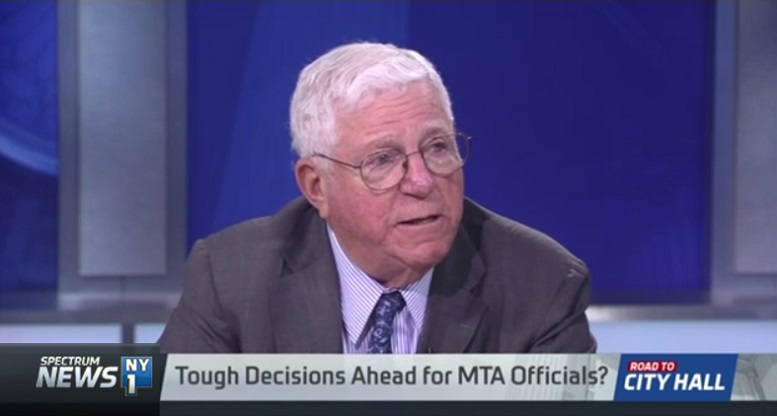With all of the MTA’s subway and commuter rail problems coming to a head during the last few months, the calls have been getting louder for New York Governor Andrew Cuomo to do something. That something has so far come in the form of a Genius Transit Challenge, a state of emergency and the promise of an additional $1 billion for repair work.
But years of decay, delay and disinvestment cannot be fixed with a snap of the fingers. Former MTA Chairman and Lieutenant Governor Richard Ravitch, the man credited with rescuing the MTA in the late 1970s, appeared on NY1’s Road to City Hall where he talked about what he did to solve the MTA’s past challenges, and what he thinks should be done to solve the MTA’s challenges of today.
The MTA Board Must be Independent
During the interview, Ravitch stated the MTA Board must be an independent body that petitions the political system for the resources it needs by making the demand for that revenue, not a body that serves the interests of those who nominate board members.
Business Community Involvement is Essential
Ravitch noted that when he was asked to fix the MTA by then-Governor Hugh Carey, he went to business leaders to show them what was wrong with the system and explain why it was in their interests to get it fixed. Chase Bank Chairman David Rockefeller in turn called on Albany to get the MTA the funding it needed. Similarly today, business leaders should be clamoring for greater investment in the system their employees rely on every day.
Create a Full Inventory of the Useful Life and Replacement Costs of MTA Facilities
One of the fatal flaws in MTA planning process lies within the 20-Year Needs Assessment framework. The MTA drafts its 20-Year Needs Assessment with the following constraints:
[A]gencies developed asset investment strategies to project their priority needs over the 20-year period. Importantly, the strategies reflect certain constraints. Chief among these are the system’s ability to accommodate the work; agencies must be able to execute the capital work while minimizing adverse impacts on service. Also, they reflect the agencies’ and the marketplace’s ability to deliver the work. Last, financial constraints were exercised to ensure that the strategies address highest priority needs in the most efficient manner and to be consistent with funding that may reasonably be expected.
By drafting the Assessment with these constraints, a complete picture of what the MTA needs is never actually painted. Without that, it is impossible to analyze what should be prioritized, or to discover what could get done by tweaking procedures. The MTA should consider Ravitch’s tactic as a way of being better informed of all of its challenges, needs and opportunities.
Re-examine State of Good Repair Metrics
Ravitch also noted that as ridership hits record levels, strains on the system are also increasing, and with this, it might be time to reexamine the state of good repair metrics in light of today’s needs.
CEO Job is Expected to Be a Full Time Job
Finally, Ravitch noted that in 2009, the Public Authorities law was amended to combine the Chairman and CEO positions, with the expectation that the CEO would be a full time employee of the MTA. He wondered aloud how new MTA Chairman Joe Lhota would fulfill this responsibility while he is also employed at NYU’s Langone Medical Center.


[…] Ravitch: MTA Board Shouldn’t Be a Rubber Stamp (NY1) […]